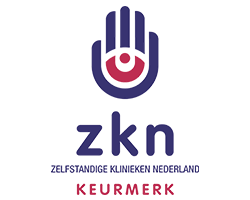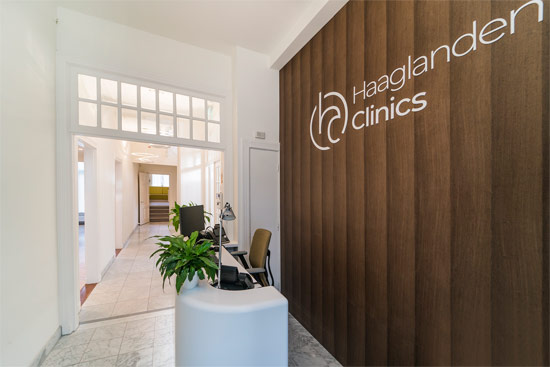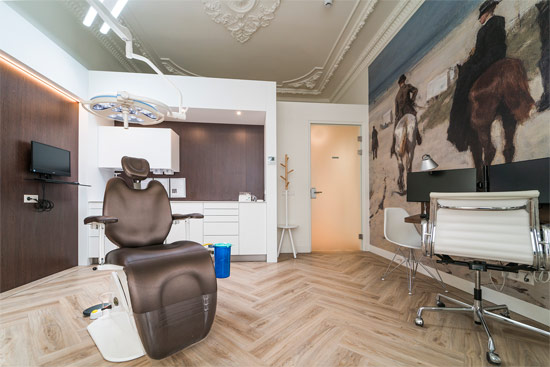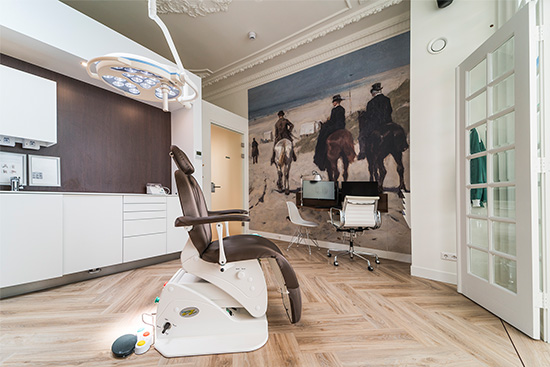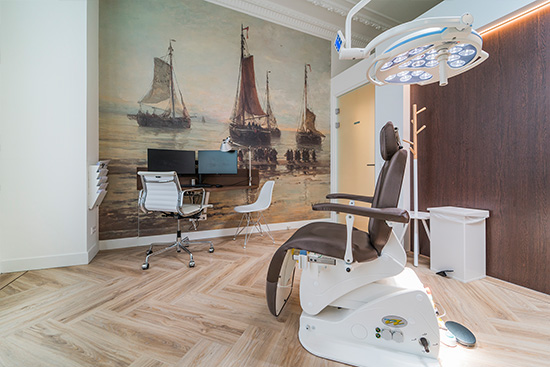Informatiefolder bovenooglidcorrectie
What are drooping upper eyelids?
Drooping upper eyelids are usually a result of the tissues around the eye becoming lax. Particularly, the skin, muscle, and underlying fatty tissue can stretch to the extent that they hang over the upper eyelids or even onto the lashes. This can cause symptoms such as:
- Limited field of vision as you see your upper eyelids
- A heavy and tired feeling around the eyes
- Headaches
- Difficulty placing contact lenses
- Challenges with eye makeup application
- Feeling that you look tired or older
Upper eyelid correction Drooping upper eyelids can be corrected through an upper eyelid correction procedure. After this procedure, you will have a refreshed and relaxed appearance, and the mentioned symptoms often decrease.
Assessment by the plastic surgeon before the operation Every gaze and every patient is different. The plastic surgeon, therefore, analyzes individually whether an eyelid correction will achieve the desired result. Drooping upper eyelids may also result from a low position of the eyebrows or occur in combination with a low position of the eyebrows. In such cases, the plastic surgeon may recommend (additional) eyebrow correction. There may also be a poor function of the upper eyelid muscle, requiring tightening of the muscle. Crow’s feet do not disappear through the surgery and can only be addressed with the muscle relaxant botox. Individual solutions are possible for all these problems. Your plastic surgeon will collaborate with you to create a desired treatment plan.
Preparation for the operation Before undergoing the operation, there are a few things you need to arrange, such as:
- Ensure that someone can take you home. You may go home immediately after the operation, but you should not drive yourself.
- Avoid alcohol consumption 24 hours before the operation, as alcohol thins the blood and can cause complications during the surgery.
- If you wear contact lenses, do not wear them on the day of the operation.
- Avoid wearing makeup on the day of the operation, and make sure your eyelids are clean.
- After the operation, your eyelids are sensitive to wind and light. Therefore, bring sunglasses with you, and you should wear them for the first three days after the operation.
- After the operation, you need to cool your eyes regularly. We recommend using frozen peas for this. Fill several bags with them and place them in your freezer. If you put the bags in a washcloth, you can use them to cool your eyes.
Medications If you are taking blood-thinning medications (such as Marcoumar, Sinaspril, Sintrom, Ascal, or Apixaban), inform the plastic surgeon during your first consultation. You will likely be asked to stop these medications three to ten days before the operation. The plastic surgeon will provide instructions for this. You can also use the homeopathic remedy Arnica (tablets, not the ointment), which you can buy at the drugstore or pharmacy. This may partially prevent swelling and bruising and can be started two or three days before the procedure. On the day of the operation, you can start taking the pain reliever paracetamol. You can take 1000 mg four times a day.
Operation
The procedure is performed in a treatment room. You can eat and drink normally beforehand. The upper eyelid correction is done under local anesthesia, meaning only the area around your eyes is numbed, and you are awake during the procedure. You lie on your back during the operation, which lasts for 45 minutes. Before the operation, the plastic surgeon draws on the upper eyelids. Then, you are covered with a sterile drape, and you receive the anesthesia injections. These are placed just under the skin of your upper eyelids, from the outside to the inside. During the operation, the plastic surgeon removes excess skin and possibly some fatty tissue. Blood vessels are cauterized with a coagulation device, which may feel warm. Most of the scar is placed in the natural crease (arcade) of the upper eyelid, making it barely visible when your eyes are open. At the outer edges, the scar may extend slightly and usually blends away between crow’s feet. During the procedure, you may experience a drop of blood or anesthesia fluid in your eyes. This is harmless. The procedure only involves the skin of the upper eyelids, and nothing will happen to your eyes.
A long suture remains at both eyes. We apply adhesive plasters over the closed wound. We remove the plasters and sutures one week after the operation during the follow-up appointment.
After the operation
Once you feel well enough, you can go home, usually right after the procedure. You cannot drive yourself home after the procedure, so it’s wise to arrange for someone to pick you up beforehand. We recommend not driving a car yourself for at least a week after the procedure. After the procedure, your eyelids may be swollen, blue, and swollen, but rarely is the swelling so severe that it hinders vision. The worst swelling and discoloration will usually disappear within a few days. For pain relief, you can take 1000 mg of paracetamol four times a day. We apply adhesive plasters over the wound. You can shower gently, but the plasters should not get too wet. If the plasters get too wet, they may come loose, causing the wound to open. To prevent bleeding, we advise you not to drink alcohol for 48 hours after the procedure. You should avoid pressure-increasing activities, such as bending, straining, lifting, and sports during the first week after the operation. You should also not swim or go to the sauna. Furthermore, you should not lie completely flat, and at night, you should place an extra pillow under your head to allow the fluid to drain from your eyes. We recommend wearing sunglasses for at least the first three days. To limit further swelling, it is important to cool the eyelids at home on the first day. You can do this by placing frozen peas in a bag with a washcloth around it on both eyes for ten minutes every hour. Always avoid direct contact of your skin with the ice. You cannot wear contact lenses for the first week after the operation. You cannot wear makeup around your eyes for the first week after the operation. After seven days, you return to the clinic. Here, the medical assistant in the outpatient clinic removes the plasters and sutures. Once the wound is healed, you can gently apply a cream or ointment to the scar, making it more supple. Using makeup is allowed again.
Sunlight can cause a scar to heal less favorably. In the sun, as well as in the tanning bed, it is advisable to cover your eyes well for the first year. Consider wearing sunglasses or using a sunscreen with a protection factor of 30 or higher. It is useful to use a lipstick (such as Labello) with SPF 30 or higher.
After about three months, the final result can be assessed. Most people are very satisfied with the procedure, so a follow-up appointment in the outpatient clinic after three months is usually not necessary. If you still want to come for a check-up, you are always welcome.
Risks and complications
- Complications in this operation are fortunately very rare but not excluded. Occasionally, bleeding may occur after an upper eyelid correction. This is usually not serious, but an additional procedure may be needed to cauterize a blood vessel. Also, it takes longer for the eyelids and the surrounding area to look normal again. Some leakage of blood droplets or wound fluid from the incision is normal. If bleeding does not stop after prolonged and firm pressing, contact your treating physician.
- Wounds can become infected. If necessary, antibiotics may be prescribed.
- It may happen that you cannot fully open or close your eyes in the first period after the operation. To prevent the eyes from drying out, the plastic surgeon may prescribe eye drops or eye ointment.
- Due to scar tissue, the eyelid may become taut. Usually, it takes several weeks to months for this to completely resolve. You can gently apply cream and massage the scars from one week after the operation to make them more supple.
- Initially, the eyelids and eyelashes may feel dull, numb, or tingling. You may also experience some fluid accumulation in the upper eyelids. These symptoms will naturally disappear over time.
- The result of an upper eyelid correction is basically long-lasting, but if the skin and muscle around the eye continue to sag, a new correction may be necessary. Also, slight asymmetry (inequality) may be a reason for a minor correction.
Important For all physical complaints or questions: if you are unsure about something, contact the clinic and ask for the on-call plastic surgeon.
Questions and contact For questions, you can contact Haaglanden Clinics at phone number 070-2 21 21 21.
Een impressie van Haaglanden Clinics GREEN
